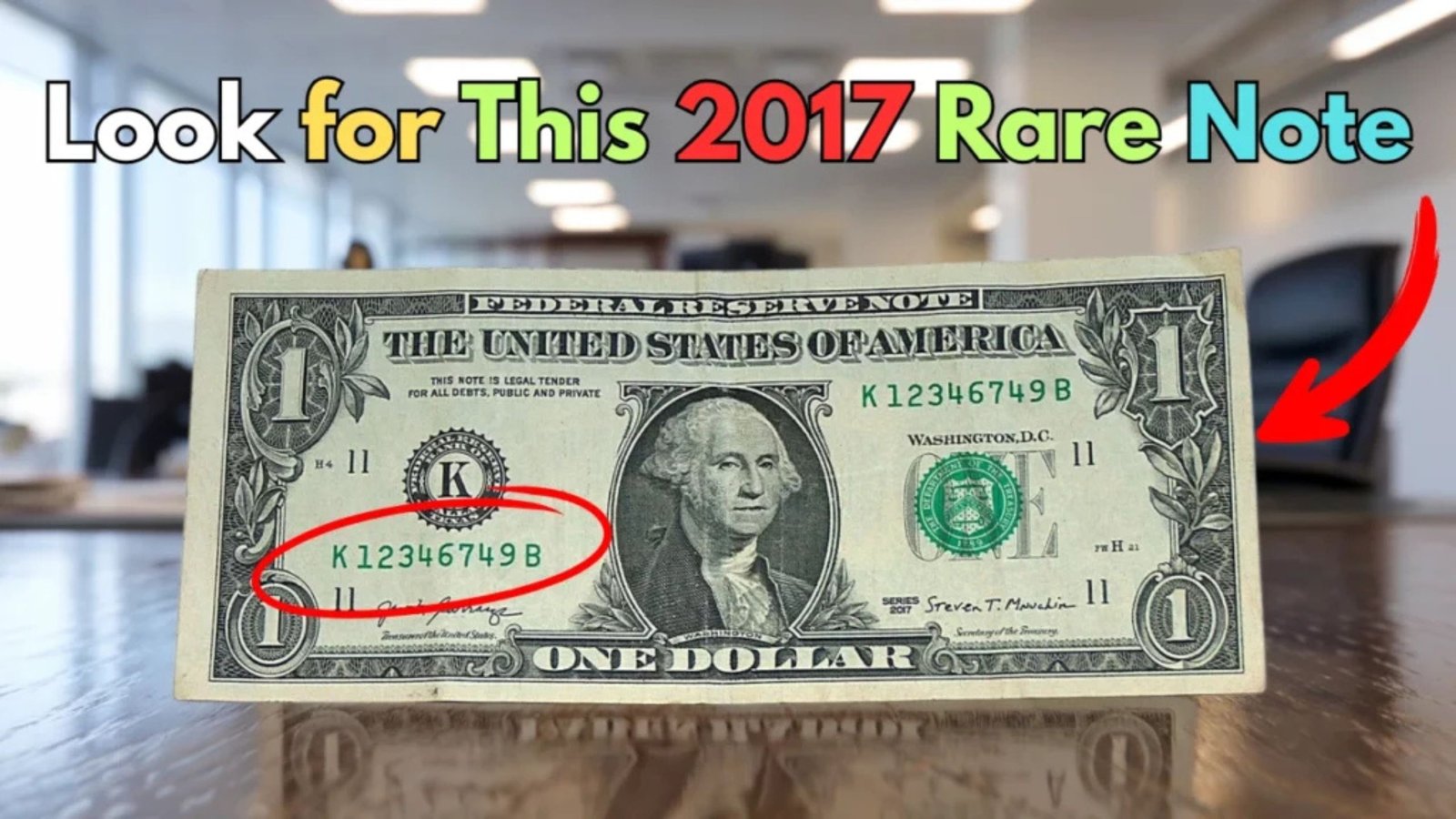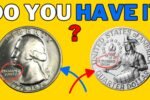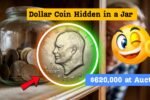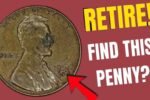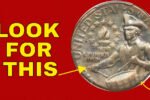2017 $1 Bill : A simple $1 bill could be worth tens of thousands of dollars — if you know what to look for. Among the most valuable paper currency collectibles is the 2017 $1 bill with a “ladder serial number”, which can fetch up to $60,000 from passionate collectors. Here’s a full breakdown of what makes this bill special, how to spot it, and why collectors are so eager to get their hands on it.
What Is a Ladder Serial Number?
A ladder serial number is a unique pattern in which the digits of the serial number appear in perfect ascending or descending order. Examples include 12345678 (ascending ladder) or 87654321 (descending ladder). These sequences are incredibly rare because they require all digits to be in sequential order with no repeats, and only one serial number like that exists per 100 million bills.
Why the 2017 Series $1 Bill Matters
The 2017 $1 bill is a recent series that saw massive production, increasing the odds (slightly) that rare serial number combinations like ladders could enter circulation. While this doesn’t make them common, it means they might still be in wallets, cash drawers, or ATMs today, making it possible for ordinary people to find them.
What Makes These Bills Worth Up to $60,000?
Several factors make these bills incredibly valuable:
-
Extreme rarity (only one true ladder like 12345678 per run)
-
Perfect condition (uncirculated bills can command a premium)
-
High collector demand
When all these conditions are met — especially a pristine bill with a true ladder number — offers can reach as high as $60,000.
How to Spot a Ladder Serial Number on Your $1 Bill
To find a ladder serial number, look at the eight-digit number printed on both sides of the front of the bill. You’re looking for a number that follows strict numerical order, such as 12345678 or 87654321. There should be no repeated digits, and the numbers must be in perfect step-by-step order — not scattered, out of order, or with breaks in sequence.
Why Condition and Certification Are Crucial
Collectors aren’t just after rare serial numbers — they want them in perfect shape. That means no folds, stains, creases, or ink smudges. For high-value bills, certification from a currency grading service like PMG (Paper Money Guaranty) or PCGS Currency greatly increases both buyer confidence and market price.
The Growing Trend of Collecting Fancy Serial Numbers
Interest in “fancy serial numbers” has exploded in recent years. Patterns like repeaters (e.g., 45454545), radars (e.g., 12344321), binaries (e.g., 01010101), and ladders are among the most desirable. Social media, online marketplaces, and auction platforms have helped drive prices upward — and stories of big payouts have fueled a modern treasure hunt.
Frequently Asked Questions (FAQs)
Q1: What makes a ladder serial number so rare?
A: A true ladder must contain all digits in order with no duplicates, which mathematically limits its occurrence to just one in 100 million.
Q2: Is my $1 bill with similar numbers (like 12345432) worth anything?
A: While interesting, it’s not a true ladder. Only perfect sequences like 12345678 or 87654321 are considered ladder serials.
Q3: How do I get my bill authenticated?
A: Submit your bill to a grading service like PMG or PCGS Currency. They’ll evaluate its authenticity and condition.
Q4: Can circulated ladder bills still be valuable?
A: Yes, though the value will be much lower than uncirculated examples. Condition plays a significant role in pricing.
Q5: Where can I sell a rare ladder serial number bill?
A: Try reputable auction houses, currency forums, or collector sites. eBay can also be a good platform if you have proper certification.
